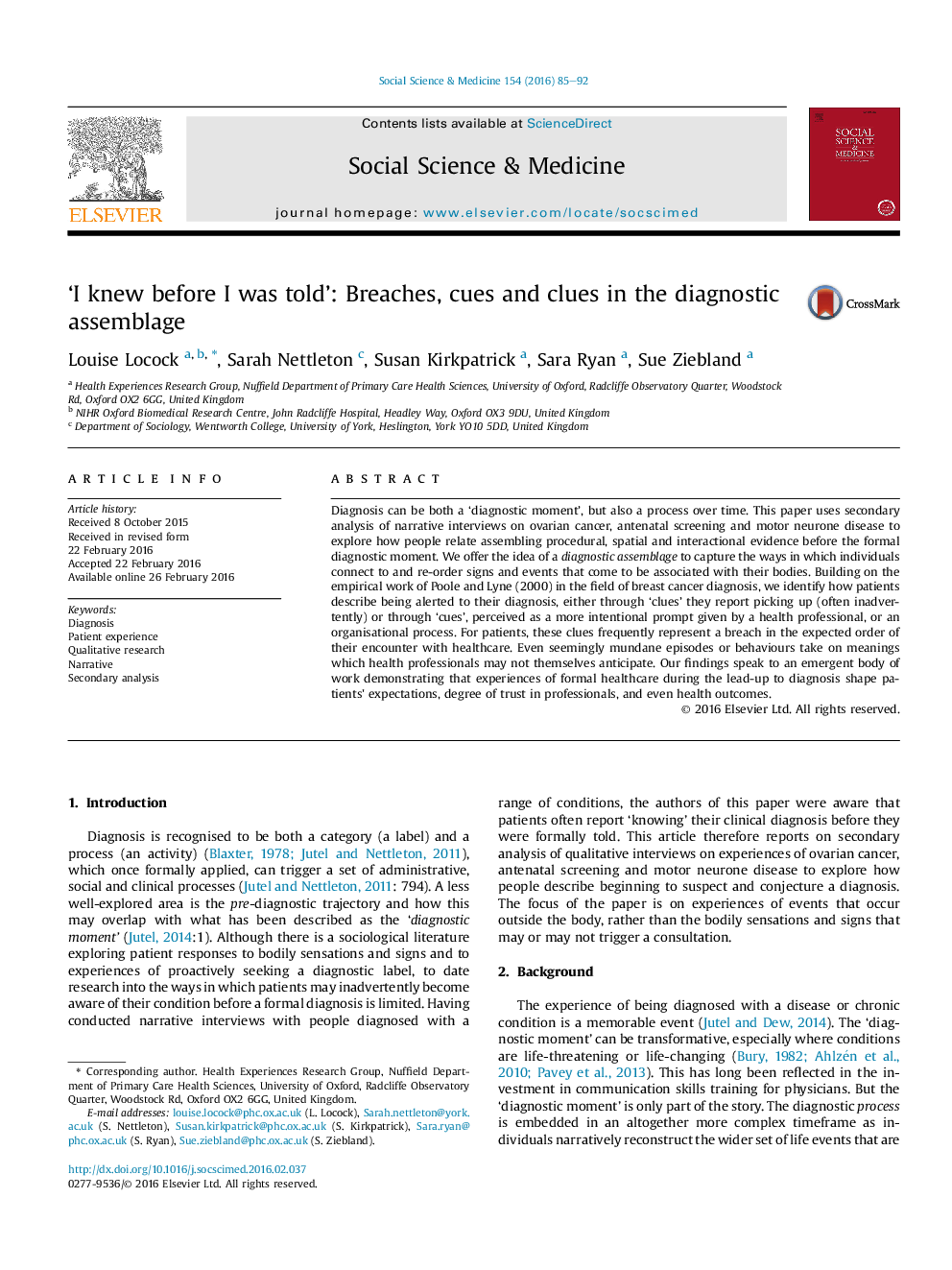| Article ID | Journal | Published Year | Pages | File Type |
|---|---|---|---|---|
| 952223 | Social Science & Medicine | 2016 | 8 Pages |
•People assemble human and non-human clues and cues to anticipate diagnosis.•Clues may be picked up inadvertently; cues are seen as a more intentional prompt.•They may be spatial, procedural and interactional.•Breaches in the expected order of healthcare encounters form part of the assemblage.•The findings include situations where a diagnosis is not expected based on symptoms.
Diagnosis can be both a ‘diagnostic moment’, but also a process over time. This paper uses secondary analysis of narrative interviews on ovarian cancer, antenatal screening and motor neurone disease to explore how people relate assembling procedural, spatial and interactional evidence before the formal diagnostic moment. We offer the idea of a diagnostic assemblage to capture the ways in which individuals connect to and re-order signs and events that come to be associated with their bodies. Building on the empirical work of Poole and Lyne (2000) in the field of breast cancer diagnosis, we identify how patients describe being alerted to their diagnosis, either through ‘clues’ they report picking up (often inadvertently) or through ‘cues’, perceived as a more intentional prompt given by a health professional, or an organisational process. For patients, these clues frequently represent a breach in the expected order of their encounter with healthcare. Even seemingly mundane episodes or behaviours take on meanings which health professionals may not themselves anticipate. Our findings speak to an emergent body of work demonstrating that experiences of formal healthcare during the lead-up to diagnosis shape patients' expectations, degree of trust in professionals, and even health outcomes.
